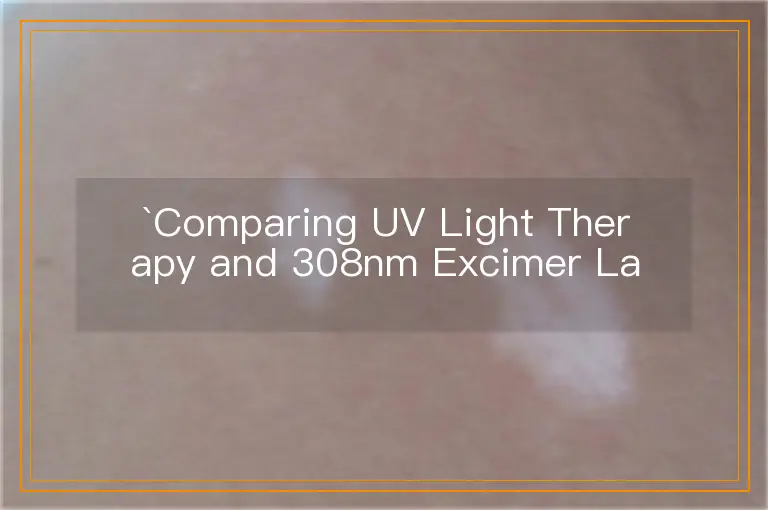BohUVihheayad308mexcimeaseeameaeeffeciveoiosfomaaiviiio.Thechoicebeweehewoshoudbebasedoacomehesiveassessmeofheaie#039sidividuaeeds,diseaseseveiy,adeameoas.

When it comes to treating vitiligo, two of the most commonly discussed therapies are ultraviolet (UV) light therapy and 308nm excimer laser treatment. Both methods have their unique advantages and considerations, making it essential to understand the differences and similarities before deciding on a treatment plan.
UV light therapy, particularly narrowband UVB (NB-UVB), utilizes a specific wavelength of UV light to stimulate the production of melanin, the pigment that gives skin its color. This helps to repigment affected areas, improving the appearance of vitiligo patches. On the other hand, the 308nm excimer laser is a more targeted approach, delivering high-energy UV light to precisely stimulate melanin production in affected areas. It works by inducing T-cell apoptosis and stimulating melanocyte proliferation, promoting melanin synthesis.
UV light therapy, especially NB-UVB, is suitable for a wide range of vitiligo patients, including those with mild to moderate cases and various types such as localized, generalized, and acral vitiligo. However, it may require longer treatment periods, typically involving multiple sessions per week over several months. In contrast, the 308nm excimer laser is particularly effective for smaller, localized patches of vitiligo. It can achieve faster results, often showing visible repigmentation after just a few sessions. However, its effectiveness may vary depending on factors such as skin type, disease severity, and immune status.
Both UV light therapy and 308nm excimer laser treatment are generally considered safe when performed under medical supervision. However, UV light therapy can cause side effects such as skin dryness, itching, and in rare cases, skin cancer if overexposed. The 308nm excimer laser, being more targeted, generally causes less damage to surrounding skin and has a lower risk of side effects. However, it may still cause temporary skin redness, dryness, or blistering, especially if the energy settings are too high.
When choosing between UV light therapy and 308nm excimer laser treatment, several factors need to be considered. UV light therapy may be more cost-effective and convenient for patients with widespread vitiligo, as it can cover larger areas at once. However, for those with small, localized patches, the 308nm excimer laser may offer a faster and more targeted treatment option. Additionally, patient preference, lifestyle, and overall health status should also be taken into account.
In conclusion, both UV light therapy and 308nm excimer laser treatment are effective options for managing vitiligo. The choice between the two should be based on a comprehensive assessment of the patient's individual needs, disease severity, and treatment goals. It is crucial to consult with a dermatologist to determine the most suitable treatment plan.